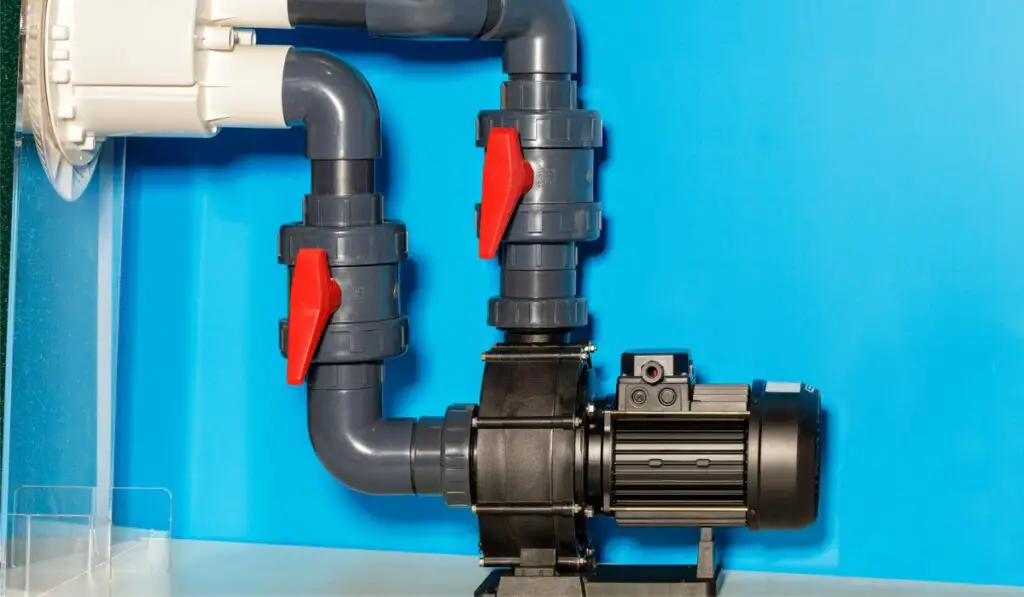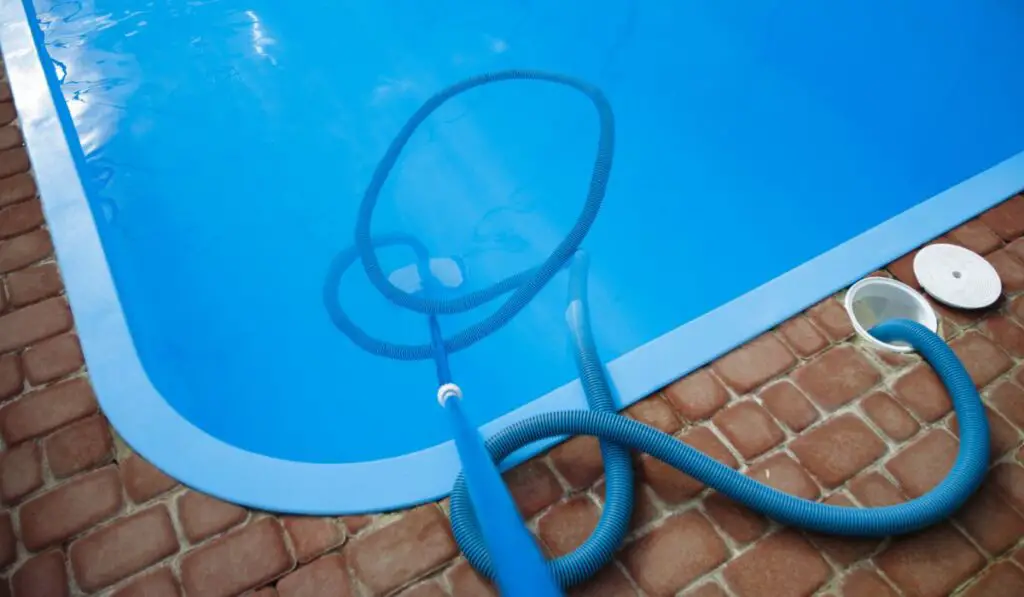All technologically-advanced pool equipment is great until it stops working. Whether the power is cut off because of harsh weather or you have a burst water pipe, any number of things can render your pump and filter temporarily useless. Luckily, you don’t need a pump to keep your pool clean. Instead, just a bit of elbow grease will do the trick before you jump in.
You can keep your pool clean without a pump by regularly removing debris with a skimmer or pool vacuum and sanitizing the water by adding the right amount of chlorine. It’s also advisable to add an anti-algae agent and cover your pool when it’s not in use to protect it from the harsh elements.
Filters and pumps are also expensive to run, so it’s helpful to know all your options. And believe it or not, cleaning a pool is not as difficult as you might think, especially if you have a smaller one. Let’s look at whether you can run a pool without a pump and how you can keep it clean without a filter.
Can You Run a Pool Without a Pump?

While pool pumps circulate water and help prevent the growth of algae and bacteria in your pool, it’s still possible to run a pool without a pool pump. This is particularly true for small and above-ground pools.
However, keep in mind that you’ll have to manually circulate the water in your pool when you don’t have a pump, but this isn’t much of a chore if you have a smaller pool.
Along with water circulation, you’ll also need to add and evenly distribute chemicals in the pool water. Make sure you also clean the pool before starting with water circulation.
It’s advisable to brush the liner of your pool at least once a day to loosen all the dust and debris and then vacuum them out. Make sure you also scrub the floor and corners of the pool, as they’re usually breeding grounds for bacteria.
Can a Pool Stay Clean Without a Filter?
You can keep a small pool clean without a filter by using a skim net, a leaf trap, a vacuum head and hose, a telescopic pole, and a pool brush to manually remove the debris from your pool.
You’ll also need to test the pool water with liquid test kits to ensure the right chlorine and pH levels, and add shock or chlorine treatments as needed. Finally, you’ll have to use a siphoning hose to regularly circulate the pool water and prevent the build-up of algae and bacteria.
While filters are undoubtedly excellent pieces of equipment, they’re not the only way you can keep a pool clean. With regular care and maintenance, you’ll be able to keep your swimming pool clean without using a filter or pump.
How To Keep a Clean Pool Without a Pump Filter

If your pool is not automatically maintained, there are several things you can do to prevent the build-up of dust, debris, and residue.
Here are a few tips that can help keep your pool clean, usable, and enjoyable without a pump filter:
Step 1: Remove Debris
It doesn’t take a long time for debris and other organic materials to collect in your pool. This is especially true after storms when the water is filled with a lot more than just a couple of leaves.
If you don’t clean out your pool, the debris will stain the surface of your previously clear and pristine pool. Make sure you regularly use supplies like a skimmer (on Amazon), raker (on Amazon), brush (on Amazon), or pool vacuum (also on Amazon) to remove all debris from your pool.
Step 2: Sanitize
Chlorine helps keep your pool clear, sanitized, safe, and clean. However, too much chlorine can actually be dangerous. So, until you have a working filter and pump, it’s better to focus on maintaining proper chlorine levels instead of using other balancing chemicals.
It’s typically advisable to have a free chlorine level ranging from one to three ppm in your pool water. However, if you don’t have a filter or pump, it’s best to maintain the free chlorine level somewhere between three and four ppm to prevent the build-up of algae, debris, and other contaminants.
And since you don’t have a pump continuously circulating the water, make sure you add fast-dissolving chlorine for an even and balanced distribution throughout the water.
Step 3: Prevent Algae
If you don’t regularly circulate the water during the humid and sticky summer months, it won’t be long before heat-loving algae start to bloom and grow in your pool. Along with regular circulation, it’s advisable to add an anti-algae agent (on Amazon) to the water to prevent algae growth.
Step 4: Circulate and Agitate
Still, stagnant water is a primary breeding ground for all sorts of gunk. So, to keep the pool clean, it’s important to regularly move and circulate the water.
If you still have power, you can use a submersible pump or a robotic pool cleaner to move, circulate, and clean the water. If you’re without electricity or don’t want to purchase any additional devices, just grab a pool brush!
Scrubbing the bottom and sides of the pool will not only significantly reduce algae but will also move and circulate the water, helping you maintain an even and balanced chlorine level throughout the pool.
Step 5: Use a Cover
Covering your pool can help reduce the number of times you’ll have to clean the water. However, make sure you choose a cover that effectively protects your pool from the harsh elements of nature, such as wind and snow when it’s not in use.
While you can protect your pool with a homemade cover, keep in mind that they’re not really effective during the rainy season. For this reason, it’s best to get a cover (on Amazon) that’s specifically designed to protect your pool, preferably one with bungee cords and tarps.
Step 6: Add Chlorine and Bromide
According to the CDC, there are several different types of germs and contaminants in your pool that can only be killed by certain cleaning agents, including bromide and chlorine. Luckily, it’s perfectly safe to add chlorine tablets (on Amazon) in a pool that doesn’t have a pump filter.
However, make sure you take the necessary precautionary measures when handling pool cleaning chemicals. Some of these safety measures include:
- Read and closely follow the dosage and instructions written on the product label.
- Keep all pool chemicals away from pets and children.
- Wear the required safety equipment, like goggles, gloves, and masks, when handling pool chemicals.
Step 7: Shock the Pool
It’s advisable to maintain your water’s chlorine levels somewhere between one and three ppm for a healthy and functional swimming pool. However, if the pool water has been stagnant for quite a long time, then shocking the pool is the only way you can clean the unfiltered water.
Shocking is basically the process of adding three to five times the normal amount of chlorine in your pool. Along with preventing algae growth, this procedure also prevents the build-up of dust and debris.
It’s best to shock a regular pool every one to two weeks. However, make sure you wait at least eight hours after shocking before jumping back into the pool.
